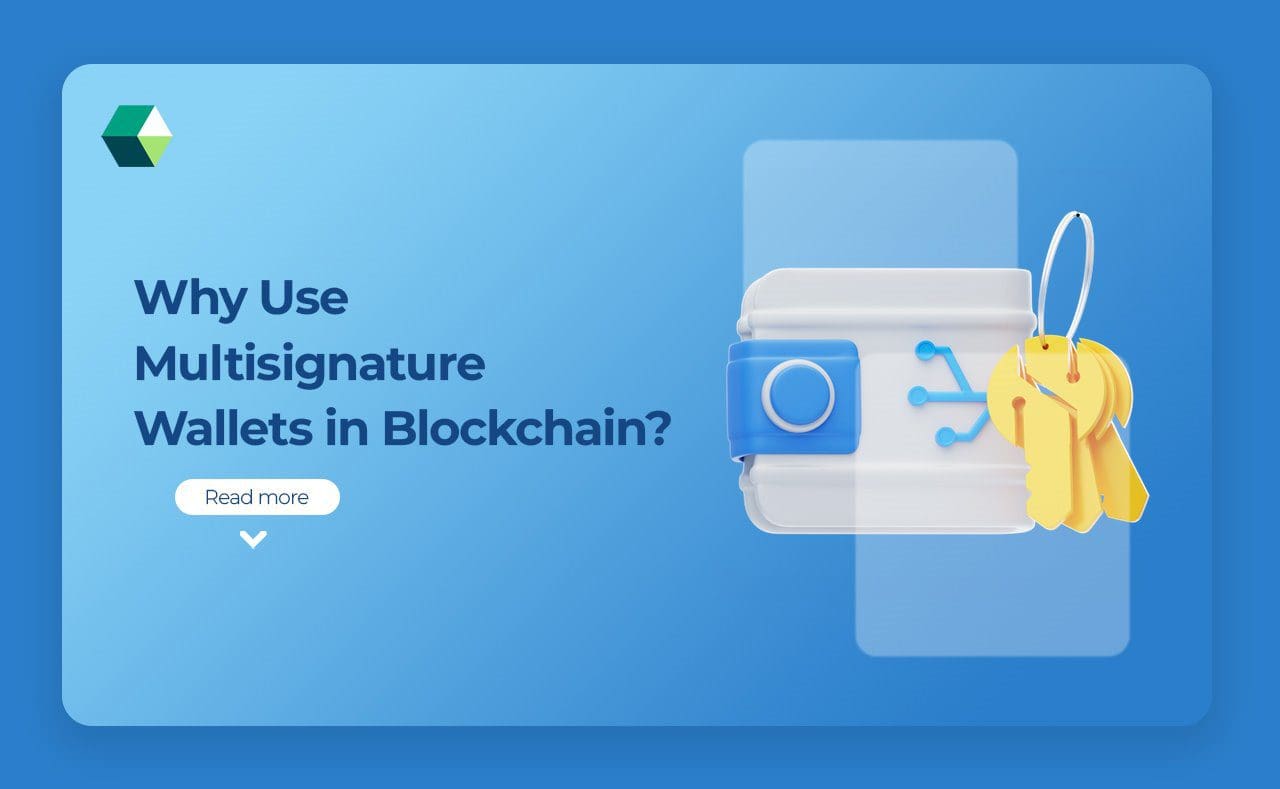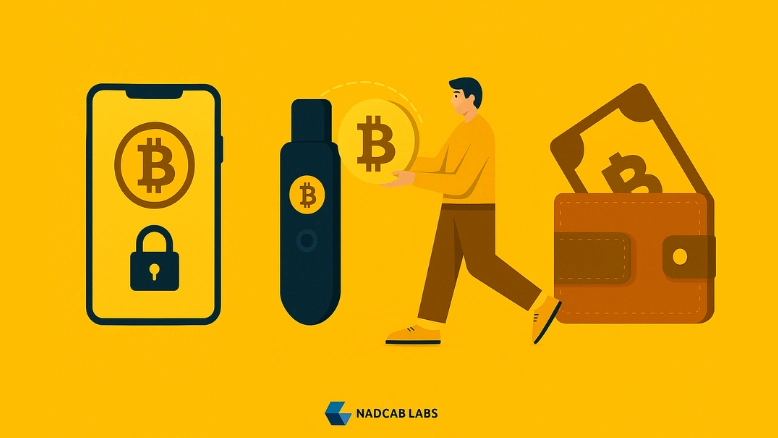
Multisignature wallets are a big step forward in blockchain security. Unlike regular wallets that only need one key to approve a transaction, multisig wallets require multiple keys to give the green light. This extra layer of protection helps keep your assets safe and gives you more control over your transactions. By requiring several keys to approve a transaction, they make it much harder for someone to steal your assets. Even if one key is stolen, the transaction can’t go through without the other necessary keys. Multisig wallets also make it easier to share control and responsibility. This means that multiple people can be involved in making decisions about transactions. This helps ensure that no one person has too much power, making it a great option for managing company funds, group investments, or decentralized organizations (DAOs).
What is a Multisignature Wallet?
A multisignature wallet is a type of digital wallet used for storing cryptocurrency that needs multiple people to approve a transaction before it can be completed. Unlike a regular wallet where one person controls the funds with a single key, a multisignature wallet requires approval from more than one person. For example, if a wallet is set up to need three signatures to approve a transaction, then at least three out of a set number of people must agree before any money is sent. This setup makes it much harder for unauthorized people to access the funds and adds extra security. Multisignature wallets are especially useful for businesses or groups working with a blockchain development company , as they help ensure that no single person can make changes or withdraw funds without others agreeing. This helps protect the money from theft and mistakes, making it a more secure option for managing digital assets.
How Does a Multisignature Wallet Work?
A multisignature wallet works by requiring multiple approvals to authorize a transaction, adding an extra layer of security to digital asset management. When a transaction is initiated, it doesn’t go through until a set number of signatures from different private yey holders are obtained. For example, in a 3-of-5 multisig setup, at least three out of five key holders must approve the transaction before it is completed. This process helps protect funds from unauthorized access and reduces the risk of theft or errors. Each key holder has their own private key, and they must all agree to release the funds. This setup is particularly valuable for businesses and organizations that use blockchain development services, as it ensures that multiple parties must collaborate to manage and protect the assets. By requiring multiple approvals, multisignature wallets enhance security and control over digital transactions, making them a robust choice for managing significant sums of cryptocurrency.
Why Use Multisignature Wallets in Blockchain?
Using multisignature wallets in blockchain provides enhanced security and control over digital assets. By requiring multiple signatures to authorize a transaction, multisig wallets significantly reduce the risk of unauthorized access and fraud. This is particularly useful in situations where several people or departments need to manage funds collaboratively. For instance, in a corporate setting or a project involving custom blockchain development services, multisignature wallets ensure that no single individual can make transactions without the consent of others, thereby increasing transparency and accountability.
The added security feature of multisig wallets makes them a popular choice for managing large sums of cryptocurrency, as they protect against both internal and external threats. They also help in avoiding mistakes by ensuring that multiple key holders must review and approve transactions, adding a layer of checks and balances. This makes multisignature wallets an essential tool for any organization or project looking to safeguard its digital assets effectively.
Benefits Of Multisignature Wallets
-
Reduced Risk of Theft
Even if one private key is compromised, the funds cannot be accessed without additional signatures.
-
Fraud Prevention
Involves multiple parties in the approval process, making it harder for any single individual to misuse the funds.
-
Error Reduction
Multiple signatories help ensure that transactions are reviewed and approved carefully, minimizing mistakes.
-
Transparency
Provides a clear record of who approved each transaction, enhancing transparency within organizations.
Best Practices For Managing Multisignature Wallets
To effectively manage multisignature wallets, it’s crucial to follow best practices to ensure security and efficiency. One key practice is to clearly define the approval process, specifying how many signatures are required and who the authorized signatories are. This clarity helps in maintaining control and prevents confusion among stakeholders. Another important practice is to securely store private keys. Each key should be kept in a separate, secure location to prevent a single point of failure. Regularly updating and backing up these keys ensures that they remain safe and accessible when needed.
It’s also advisable to regularly review and update signatory roles to reflect changes in team composition or organizational structure. This practice helps in maintaining proper access controls and ensures that only relevant parties can authorize transactions. Utilizing blockchain consulting solutions can further enhance the management of multisignature wallets by providing expert advice on best practices, security measures, and compliance requirements. Consulting services can help design robust multisignature setups tailored to specific needs, ensuring that the wallet is managed efficiently and securely.
How Do You Set Up a Multisignature Wallet?
Setting up a multisignature wallet involves several key steps:
-
Choose a Wallet Provider
Select a reliable wallet provider that supports multisignature functionality. Ensure the provider meets your security and usability needs.
-
Signatory Requirements
Decide how many signatures are needed to approve transactions (e.g., 2-of-3, 3-of-5). This determines how many total keys are involved and how many are required to authorize a transaction.
-
Generate Private and Public Keys
Each signatory must create their own Private and Public Key Pair. These keys, known as blockchain public keys , will be used to authorize transactions.
-
Configure the Multisig Setup
Using your chosen wallet provider, input the public keys into the multisignature configuration settings. Define the signature requirements based on your earlier decision.
-
Distribute Private Keys Securely
Ensure that each signatory securely stores their private key. Private keys should be kept in a safe, secure location to prevent unauthorized access.
-
Test the Configuration
Perform a test transaction to ensure that the multisignature wallet functions correctly and that the approval process works as intended.
-
Set Up Backup and Recovery
Implement a backup and recovery plan for your private keys and multisignature configuration to prevent loss in case of accidental damage or theft.
-
Consult with Experts
For complex setups or to ensure best practices, consider engaging with a blockchain consulting service. They can provide expert guidance on configuration, security, and compliance.
-
Regularly Review and Update
Periodically review and update the Multisignature Setup to reflect changes in team structure or security requirements.
Why Trust Nadcab Labs With Your Multisignature Needs?
Trusting Nadcab Labs with your multisignature wallet needs is a smart choice because they are a top blockchain consulting company with deep expertise in the field. They know how to set up and manage multisig wallets to keep your digital assets safe and secure. They offer expert advice and support to make sure your multisignature setup is well-configured and working correctly. They handle everything from the initial setup to ongoing support, ensuring that your wallet operates smoothly and securely. With Them, you can rely on their experience and skill to protect your funds and make managing your wallet easier.





